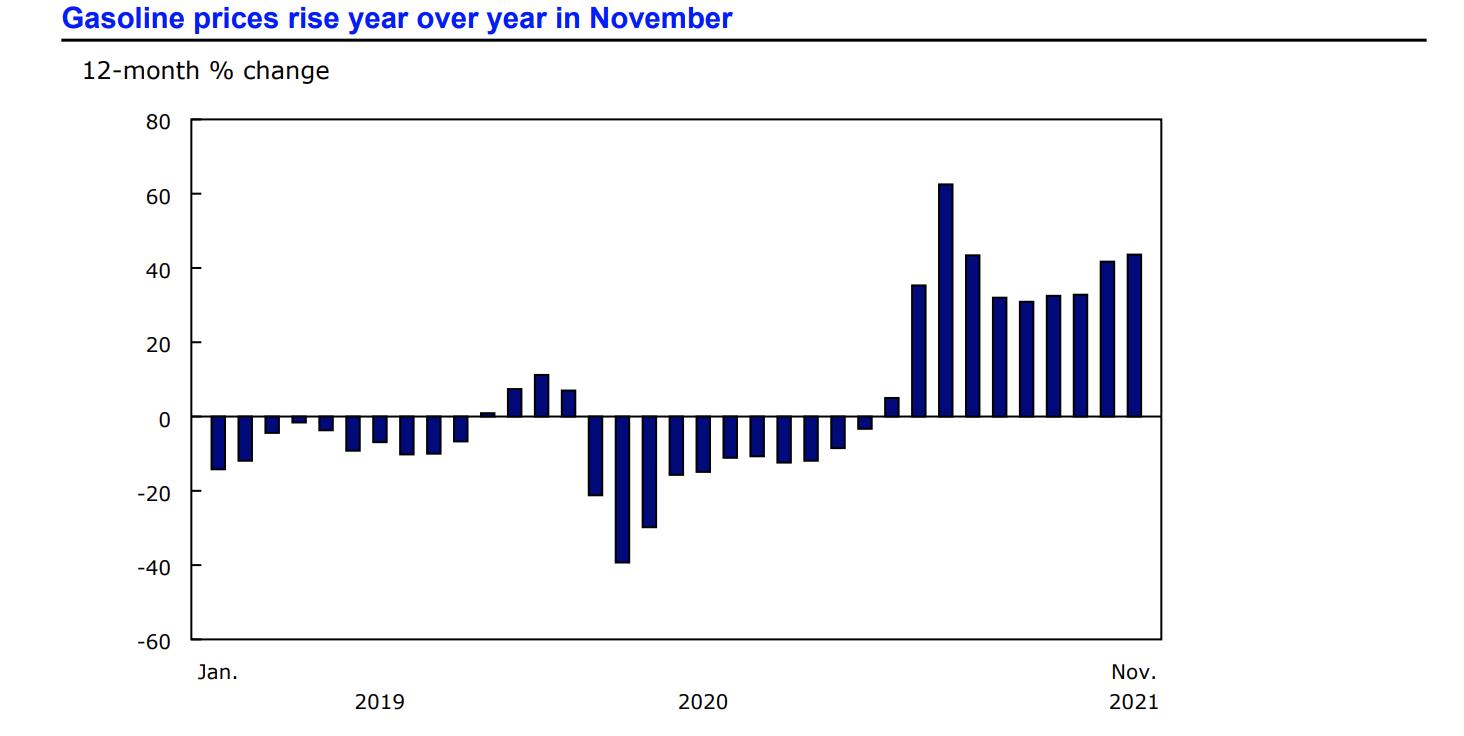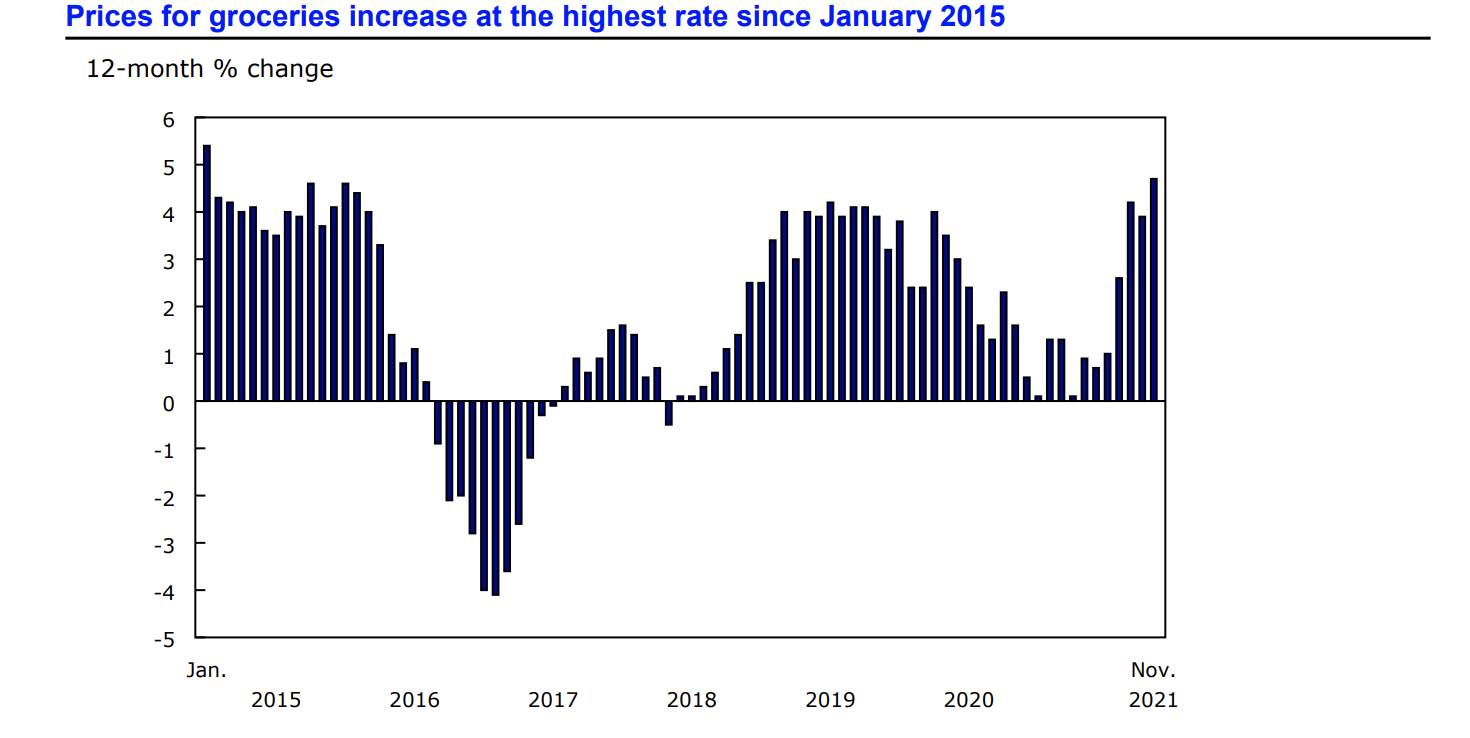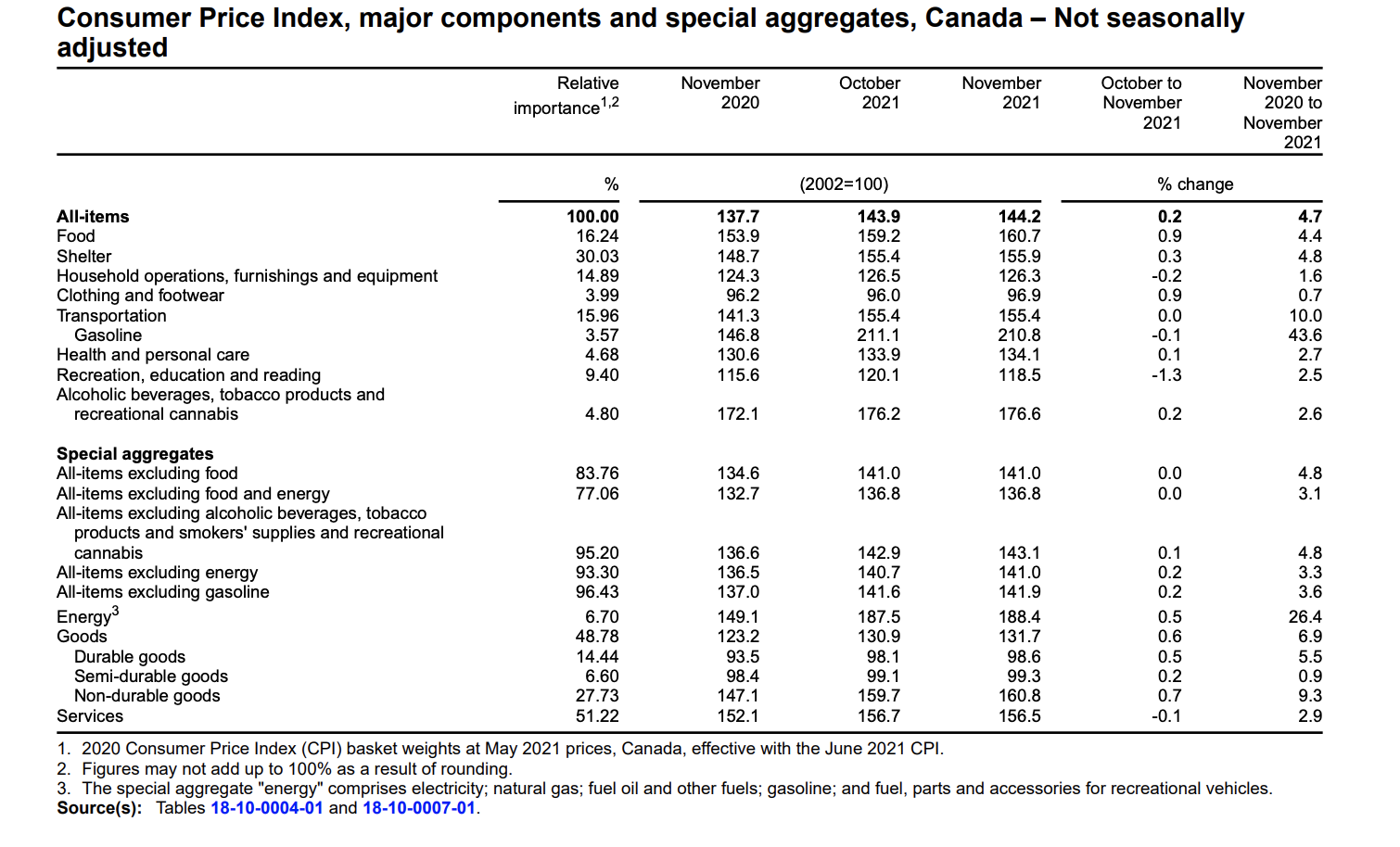The Consumer Price Index edged up 4.7% in November, on a year-over-year basis, reported Statistics Canada. This is the identical percentage increase seen in October.
“Canadians continued to feel the impact of supply chain disruptions in November, which put upward pressure on prices for durable goods, like passenger vehicles and furniture. Prices for foods commonly seen around dinner tables, including vegetables, meat and pasta, have also increased recently compared with 2020. Towards the latter half of the month, the impact of the floods in British Columbia and the spread of the Omicron COVID-19 variant created new uncertainties around further potential disruptions to supply chains and oil demand,” explained Stats Can in its report.
Excluding the price of gasoline, the CPI increased 3.6% since this time last year – the same percentage gain in October. In November, on a monthly basis, the CPI edged up 0.2%.

(Sources: Statistics Canada)
Gasoline Index
In November, the price of gas surged 43.6% year-over-year.
“Oil production continues to remain below pre-pandemic levels, though global demand has increased.
On a monthly basis, gasoline prices were down 0.1% compared with October 2021, amid volatility in global oil markets because of ongoing uncertainties brought on by COVID-19 variants,” explained the agency.

(Sources: Statistics Canada)
Food Index
Over the last 12-month period, the index for food rose 4.4%, compared to 3.9% seen in October.
“This is the largest increase since January 2015 when prices went up by 5.4%. Fresh vegetable prices increased 2.3% in November, the first yearly increase since February 2021. Prices for other fresh vegetables, including cucumbers, mushrooms and broccoli, drove the increase, rising 6.4% on a year-over-year basis as a result of higher shipping costs and supply chain disruptions. Prices for fresh or frozen beef increased 15.4% year over year in November. Poor crop yields resulting from unfavourable weather conditions have made it more expensive for farmers to feed their livestock, in turn raising prices for consumers,” stated Statistics Canada in its report.

(Sources: Statistics Canada)
Shelter Index
Year-over-year, the shelter index rose 4.8% in November, being one of the leading variables contributing to the CPI rise.
“Inflation is often compared to changes to average wages. In November 2021, the CPI rose 4.7% on a year-over-year basis. Wage data, which maintains employment composition by occupation and tenure, from the Labour Force Survey found that wages rose 2.8% during the same period, meaning that, on average, prices rose faster than wages, and Canadians experienced a decline in purchasing power,” explained Statistics Canada.
Statistics Canada released a statement pertaining to the data collected for November.
“In November 2021, all special treatments introduced for goods and services that were unavailable due to the COVID-19 pandemic were removed. With the November Consumer Price Index (CPI), cruise-based travel tours, which represented 0.03% of the 2020 CPI basket, are no longer being imputed and an adjustment factor is applied. The November index level for this component of the travel tours index is obtained by comparing November 2021 and the last observed price in 2020. This procedure removes the impact of all imputations performed in the months where this service was not available for consumption. This treatment corresponds to the approach used for the re-introduction of seasonal products in the CPI in the first month of their in-season period. The headline CPI for November 2021 would have been the same with or without the re-introduction of this component. Users are advised to exercise caution in interpreting the 1-month change for November 2021 and the 12-month change for the next 12 months for the travel tours index”
Source cited: https://www150.statcan.gc.ca/n1/daily-quotidien/211215/dq211215a-eng.htm


